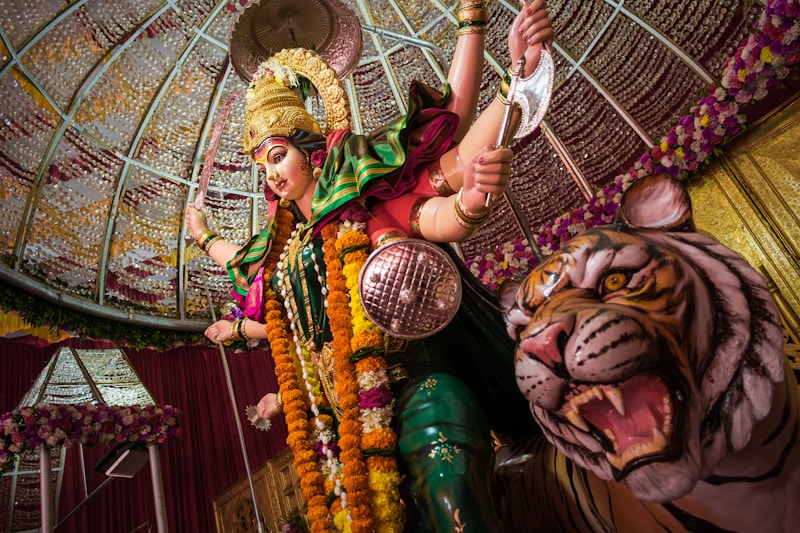12 Questions
हिंदी साहित्य का मूल निर्माण किसके द्वारा किया गया था?
रामायण और महाभारत जैसे हिंदू दिव्यकाव्यकार ने हिंदी साहित्य के नींव रखी।
आधुनिक हिंदी साहित्य के मुख्य लेखकों में से कुछ कौन-कौन हैं?
अमृता प्रीतम, खुशवंत सिंह और गुलजार आधुनिक हिंदी साहित्य के महत्वपूर्ण लेखक हैं।
हिंदी साहित्य में किस युग में ब्रिटिश औपनिवेशिक काल के कवियों का प्रभाव दिखाई दिया?
संस्कृत और अपभ्रंश में नाटक लिखने वाले कवियों का आधुनिक हिंदी कविता पर प्रभाव था।
हिंदी की संस्कृति के प्रमुख तत्व कौन-कौन हैं?
उत्तर भारत के विस्तृत क्षेत्रों में क्षेत्रीय संस्कृतियों ने हिंदी की स्वभाव को आकार दिया है।
हिंदी भाषा के व्याकरण में किस प्रकार का महत्वपूर्ण स्थान है?
हिंदी भाषा के व्याकरण में क्रियाएँ, संज्ञा, सर्वनाम और क्रियापदों का महत्वपूर्ण स्थान है।
हिंदी व्याकरण में किस अंग का अध्ययन महत्वपूर्ण है?
हिंदी व्याकरण में कारक, समास, वचन और संधि का अध्ययन महत्वपूर्ण है।
देवनागरी लिपि किसे प्रतिनिधित करती है और इसका क्या महत्व है?
देवनागरी लिपि हिंदी विविधताओं के लिए मुख्य लेखन प्रणाली है। इसकी सरलता के कारण देवनागरी को सीखना अन्य भाषाओं की तुलना में आसान हो जाता है।
अंग्रेज़ी का हिंदुस्तानी शब्दावली में कौन-कौन से क्षेत्रों में प्रभाव डाला है?
विज्ञान और प्रौद्योगिकी के क्षेत्र में।
हिंदी के व्याकरण में किन-किन तत्वों का समाहार होता है?
संज्ञा विभक्ति, क्रिया परसर्ग, और वाक्य रचना।
हिंदी साहित्य में क्या महत्वपूर्ण भूमिका है देवनागरी लिपि की?
वर्णनात्मक अभिव्यक्ति के लिए देवनागरी लिपि महत्वपूर्ण है।
हिंदी को अन्य भाषाओं से कैसे प्रभावित किया गया है?
उर्दू, बंगाली, तमिल, तेलुगू, कन्नड़, मलयालम जैसी भारतीय भाषाएँ हिंदी के शब्दावली में समृद्धि लाने में सहायक हैं।
हिंदी की विशेषता क्या है जो इसे रोमांस भाषाओं से अलग बनाती है?
हिंदी में संज्ञाओं के लिए लिंग समझौता नहीं है।
Study Notes
Exploring Hindi - Language, Culture, Literature, Script, Vocabulary, and Grammar
Hindi is one of the most widely spoken languages globally, with over half a billion people speaking it. This language encompasses more than just communication; it's intertwined with Indian traditions, literature, and cultural expressions. As we delve into its different facets, let's explore how Hindi has evolved through history and continues to grow today.
Hindi Literature
Hindu epics such as the Ramayana and Mahabharata laid the foundations for Hindi literature centuries before Christ. Later, during the British colonial period, poets like Bhavabhuti wrote plays in Sanskrit and Apabhramsha, which later influenced modern Hindi poetry. Notable authors from present times include Amrita Pritam, Khushwant Singh, and Gulzar. Modern literary genres range from short stories and novels to drama and poetry, all reflecting societal changes and current events in India.
Hindi Culture
A major component shaping the nature of Hindi lies within regional cultures across vast swathes of northern India. Each state has a unique dialect, while there remains a common thread shared between them due to similarities in historical, religious, linguistic, and geographical backgrounds. The relationship among Hindi speakers fosters diverse expressions of art forms and festivals, promoting unity based on local customs rather than uniformity dictated by a central authority.
Hindi Script
The Devanagari script, where each letter symbolizes a phoneme, serves as the standard writing system for most Hindi variations. The simplicity of this script makes learning Hindi easier compared to other languages with similarly complex scripts like Chinese characters or Arabic script. In addition to serving as the literal representation of verbal expressions, Devanagari contributes significantly to the aesthetic quality of the written word, allowing Hindi scriptures to serve both functional and artistic purposes.
Hindi Vocabulary
Like any language, Hindi experiences constant evolution due to borrowings from foreign languages and amalgamation of various lexicons. English influences have expanded Hindi vocabulary, particularly in technical fields such as science and technology, resulting in a blending of linguistic styles known as Angrezi Ka Hindustani. Additionally, Indian languages like Urdu, Bengali, Tamil, Telugu, Kannada, Malayalam also contribute to diversifying Hindi's lexicon.
Hindi Grammar
As a member of the Indo-European family, Hindi shares many grammatical features with Romance languages like Spanish, French, Italian, and Portuguese. Hindi incorporates elements of noun declension, verb conjugation, and sentence structure reminiscent of Latin grammar. However, unlike these languages, Hindi does not require gender agreements for nouns nor inflect verbs for tense, mood, person, number, case, or aspect, simplifying its usage and making it straightforward even for non-native learners.
In conclusion, Hindi presents itself as much more than merely a means of communication. It reflects the heritage of diverse communities living under its umbrella, resonating the mosaic of Indian civilization, bridging gaps between traditional wisdom and contemporary innovations. So, whether you seek to immerse yourself in the profound depth of ancient Hindu texts or simply want to indulge in the latest Bollywood spectacle, understanding Hindi will offer unparalleled access to the splendor that constitutes India.
Delve into the rich tapestry of Hindi language encompassing its literature, culture, script, vocabulary, and grammar. From ancient Hindu epics to modern-day literary genres, regional diversity to Devanagari script, language evolution to grammatical features - explore the facets that make Hindi a vibrant language.
Make Your Own Quizzes and Flashcards
Convert your notes into interactive study material.




